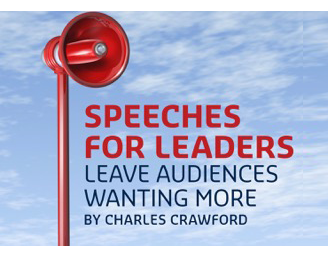My latest public speaking victim reports from the battlefield:
Excellent feed-back from various (incl very critical) people.
The speech set the right tone for the conference.
The organisers had kindly agreed to let me go last – which made a big difference.
Ah!
Here the task for Mr X was to give a short speech (some eight minutes) to help set the scene for an international conference as part of an opening ceremony of sorts: two senior local dignitaries would speak first, then Mr X, then another senior local dignitary. Some 30 minutes in all. Then another speaker would deliver the long keynote address to get the conference substantively under way.
As Mr X and I pored over what might be said and how best to say it, I knew that his emerging speech would have energy and pizzazz by the usual rather formal standard of such events. Perhaps, one might start to think, rather more energy and pizzazz than the other three speeches by the senior local dignitaries where the expected cultural emphasis could be on protocol, ‘distance’ and ‘authority’ rather than some unexpected Big Picture themes?
So I advised Mr X to ask the organisers if his speech could be the final one of the opening four, and they kindly agreed. With the result that as expected his speech stood out on the day. It was different.
Imagine if there are four speeches to open an event:
- Flat
- Flat
- Wow!
- Flat
The wowness of the third speech is promptly lost by being followed by Flat. Just when everyone is at last having a good time, it all slumps backwards.
This echoes what happens during a speech when a speaker comes to life by speaking naturally but then reverts to the prepared text, as described in my book Speeches for Leaders:
A blight of modern leadership is that too many speeches are indeed written, and then used by a leader on the day as the main source of words.
In most speeches it does not matter if the leader departs from a prepared text. In fact, the speech might well make the most impact precisely when the leader goes off script.
But it’s painful to watch a leader with a prepared text have a new thought during a speech and come to life as a person, talking strongly to an audience straight from heart or brain, then slump back into the stolid prepared text.
Emotional engagement is achieved – and abruptly ebbs away. The audience hears the leader’s unhappiness. And their own.
It’s not just the words of a speech. They’re the easy bit.
It’s getting the right tone by linking the words cleverly to the context (audience/occasion/wider scene) so that the speaker gets maximum impact there, on that day.
What’s going on here? Where does this speech fit?
Details.











Your disgraced former colleague Craig Murray is now asking his flock to support him financially since running his blog is apparently preventing him from making a living income. As he's a canny Scot (by adoption) he suggests "recurring subscriptions" which could be as little as £2 a month.
Mr Murray is quite right, of course: his blog provides a safe haven for those who hate the West and Israel, for Russia/Putin/Assad shills, for the disaffected of many stripes and, last but not least, provides comfort for the lonely and the aged and so it is only right and proper that those people should pay for their pleasures.
Having said that, I fear that he will be somewhat disappointed by the response.
On a technical point, I wonder if any income arising out of such "recurring subscriptions" would be considered as taxable earnings by the Inland Revenue?
Finally, can you please assure your readers that you will never ask them to support your blog financially?
Best remove that comment. It is libellous.
The commenter has been banned for sock puppetting and trolling on CM's blog.
Haha I promise! I'll never ask my reader to support the blog financially.
But if anyone wants to send me some money I'll never complain. There is a LOT of mighty good stuff here, all for free. Why do I do it?